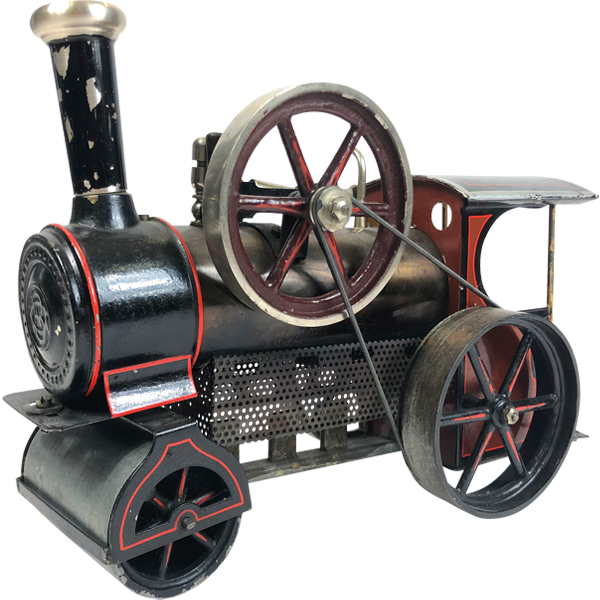
- DE
- EN
- FR


Around 1712, the English master blacksmith Thomas Newcomen developed the first practical steam engine. This still very simple model was mainly used as a pump. James Watt used it to construct the double-acting steam engine, which could be used in a more versatile way. Gradually, the steam engine became economically viable and, from about 1750 onwards, became established not only in mining but also in industry and transport. It became the engine of industrialisation.
The first steam engine for children was probably manufactured by the Ernst Plank Nuremberg company from 1867 onwards. These early toy steam engines were abstract, like Bing's three-legged ones, which you can discover in the exhibition room. Later, the machines became more and more model-like and came closer to the large-scale machines. They were richly technically equipped and reflected the spirit of the time with their Art Nouveau elements.
Even the tiled floors made of lithographed sheet metal were modelled on the originals and featured, for example, the "Mettlach Tiles" by Villeroy & Boch.
The steam engines served as teaching aids and as drives for extensive accessories. These could be connected to the steam engines and displayed models of craftsmen, wells, mills, carousels, tools and much more. A particular favourite in the children's room was the steam roller, because it could drive itself.
The Bing company offered a very wide range of steam engines. They ranged from simple machines for smaller budgets to very expensive and luxurious top-of-the-range models. The designs were just as varied with lying and standing steam engines or locomobiles, i.e. stationary or travelling steam engines.
Some machines had a dynamo and lamps and could thus produce electric light.
The heyday of toy steam engines lasted from around 1890 to the 1920s.